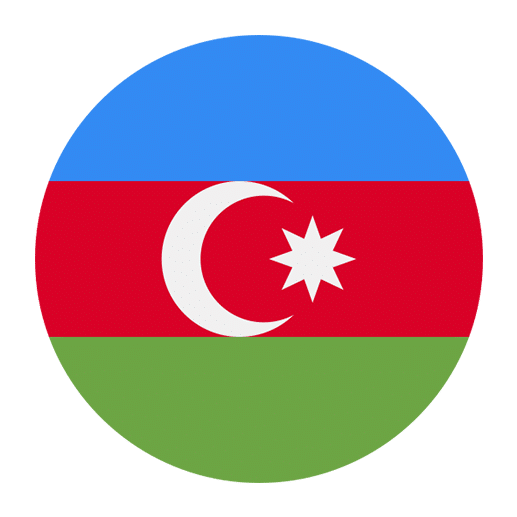When learning a new language, describing physical appearance is an essential skill that helps in everyday conversations. Azerbaijani, a Turkic language spoken primarily in Azerbaijan, uses specific vocabulary and structures for describing how people look. In this article, we will cover a range of expressions and vocabulary that will enable you to describe physical appearance in Azerbaijani fluently.
Basic Adjectives for Physical Appearance
To begin with, let’s explore some basic adjectives that are commonly used to describe physical appearance. Knowing these words will help you form sentences that can describe various features of a person.
– **Tall**: uzunboylu
– **Short**: qısaboylu
– **Slim**: arıq
– **Fat**: kök
– **Beautiful**: gözəl
– **Handsome**: yaraşıqlı
– **Ugly**: çirkin
– **Young**: cavan
– **Old**: qoca
These words can be used as standalone adjectives or in sentences. For example:
– O, çox **uzunboylu**dur. (He/She is very **tall**.)
– Mənim dostum **arıq** və **yaraşıqlıdır**. (My friend is **slim** and **handsome**.)
Describing Hair and Eyes
Hair and eye color are significant aspects of physical appearance. Let’s look at some vocabulary to describe these features.
Hair
– **Hair**: saç
– **Blonde**: sarısaçlı
– **Brunette**: qara saçlı
– **Red-haired**: qırmızı saçlı
– **Curly**: buruq
– **Straight**: düz
– **Long hair**: uzun saç
– **Short hair**: qısa saç
Examples:
– Onun **sarısaçlı** qardaşı var. (She has a **blonde** brother.)
– Mənim **düz saçım** var. (I have **straight hair**.)
Eyes
– **Eyes**: gözlər
– **Blue eyes**: mavi gözlər
– **Green eyes**: yaşıl gözlər
– **Brown eyes**: qəhvəyi gözlər
– **Big eyes**: böyük gözlər
– **Small eyes**: kiçik gözlər
Examples:
– O, **mavi gözlərə** malikdir. (He/She has **blue eyes**.)
– Mənim **kiçik gözlərim** var. (I have **small eyes**.)
Complexion and Skin Color
Describing someone’s complexion and skin color is another important aspect. Here are some useful terms:
– **Fair-skinned**: açıqdərili
– **Dark-skinned**: tünddərili
– **Pale**: solğun
– **Tanned**: qaralmış
– **Freckles**: çillər
Examples:
– O, **açıqdərilidir** və **çilləri** var. (He/She is **fair-skinned** and has **freckles**.)
– Mən **qaralmışam** yayda. (I got **tanned** in the summer.)
Describing Age and Build
Describing someone’s age and build can provide more specific details about their appearance.
Age
– **Child**: uşaq
– **Teenager**: yeniyetmə
– **Adult**: böyüklər
– **Middle-aged**: orta yaşlı
– **Elderly**: yaşlı
Examples:
– O, **orta yaşlı** bir qadındır. (She is a **middle-aged** woman.)
– Onun atası **yaşlı**dır. (His/Her father is **elderly**.)
Build
– **Muscular**: əzələli
– **Athletic**: atletik
– **Stocky**: iri
– **Lean**: arıq, cılız
Examples:
– O, çox **əzələlidir** və **atletik** görünür. (He/She is very **muscular** and looks **athletic**.)
– Mənim dostum **iri** və **güclüdür**. (My friend is **stocky** and **strong**.)
Specific Facial Features
Describing specific facial features can give a more detailed picture. Here are some terms related to facial features:
– **Nose**: burun
– **Big nose**: böyük burun
– **Small nose**: kiçik burun
– **Pointed nose**: sivri burun
– **Flat nose**: yastı burun
– **Lips**: dodaqlar
– **Full lips**: dolu dodaqlar
– **Thin lips**: incə dodaqlar
– **Ears**: qulaqlar
– **Big ears**: böyük qulaqlar
– **Small ears**: kiçik qulaqlar
Examples:
– Onun **böyük burunu** və **dolu dodaqları** var. (He/She has a **big nose** and **full lips**.)
– Mənim **sivri burunum** və **kiçik qulaqlarım** var. (I have a **pointed nose** and **small ears**.)
Describing Clothing and Style
Clothing and style also contribute to a person’s overall appearance. Here are some useful words:
– **Clothes**: paltarlar
– **Fashionable**: dəbli
– **Casual**: gündəlik
– **Formal**: rəsmi
– **Jeans**: cins şalvar
– **Dress**: don
– **Suit**: kostyum
– **Shirt**: köynək
– **T-shirt**: futbolka
Examples:
– O, həmişə **dəbli** paltarlar geyinir. (He/She always wears **fashionable** clothes.)
– Mən **gündəlik** geyimi sevirəm. (I like **casual** wear.)
Forming Sentences to Describe Appearance
Now that we have a good vocabulary base, let’s look at how to form sentences to describe someone’s appearance in Azerbaijani.
A basic structure for describing physical appearance would be:
**Subject + Adjective + Verb + Complement**
For example:
– O, **gözəl** qızdır. (She is a **beautiful** girl.)
– Mənim qardaşım **uzunboylu** və **qara saçlıdır**. (My brother is **tall** and has **black hair**.)
If you want to describe multiple attributes, you can use the conjunction “və” (and):
– O, **gözəl** və **cavan** qızdır. (She is a **beautiful** and **young** girl.)
– O, **uzunboylu**, **arıq** və **yaşlıdır**. (He/She is **tall**, **slim**, and **elderly**.)
Describing Personality Alongside Appearance
Often, physical descriptions are accompanied by descriptions of personality. Here are some adjectives for personality traits:
– **Kind**: mehriban
– **Friendly**: dostcanlı
– **Serious**: ciddi
– **Funny**: gülməli
– **Intelligent**: ağıllı
– **Lazy**: tənbəl
– **Hardworking**: çalışqan
Examples:
– O, **mehriban** və **dostcanlı** bir insandır. (He/She is a **kind** and **friendly** person.)
– Mənim dostum **ağıllı** və **çalışqandır**. (My friend is **intelligent** and **hardworking**.)
Practice and Application
To make these new words and structures part of your active vocabulary, practice is key. Here are some exercises you can do:
1. **Descriptive Paragraphs**: Write short paragraphs describing the physical appearance of people you know or characters from books and movies. Try to use as many different adjectives and structures as possible.
2. **Flashcards**: Create flashcards with Azerbaijani words on one side and their English translations on the other. Test yourself regularly to reinforce your memory.
3. **Conversational Practice**: If you have language exchange partners or friends who speak Azerbaijani, practice describing people you see around you. This will help you get comfortable with spontaneous description.
4. **Listening and Imitation**: Listen to Azerbaijani media, such as TV shows, movies, or podcasts, and pay attention to how people describe each other. Try to imitate these descriptions in your practice.
By incorporating these practices into your language learning routine, you will become more adept at describing physical appearance in Azerbaijani, enhancing your overall communication skills in the language. Happy learning!

